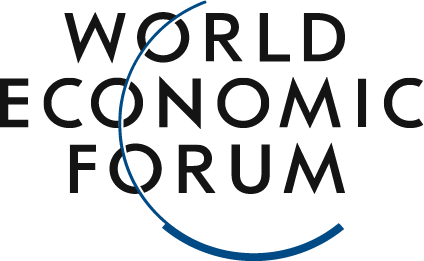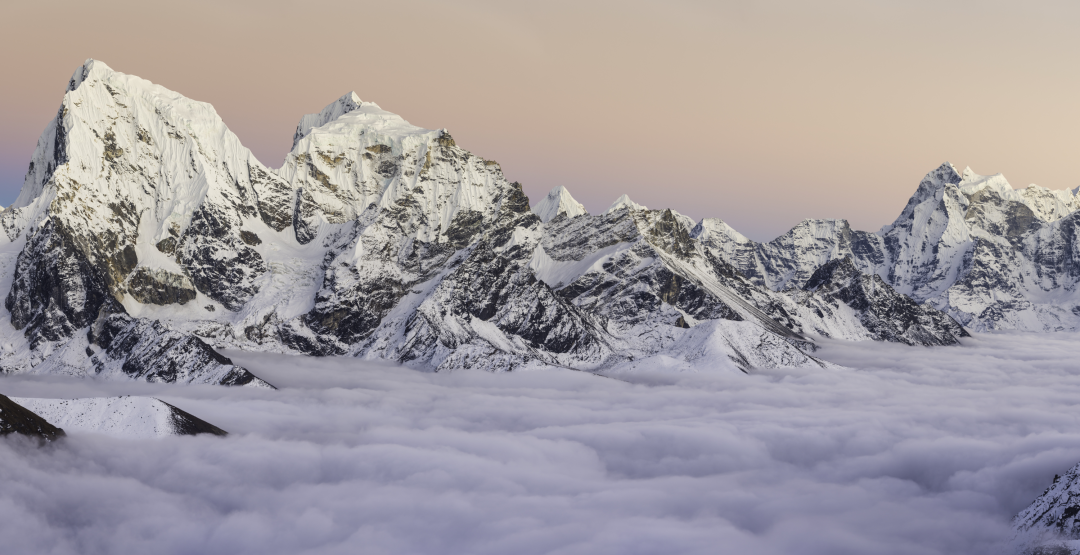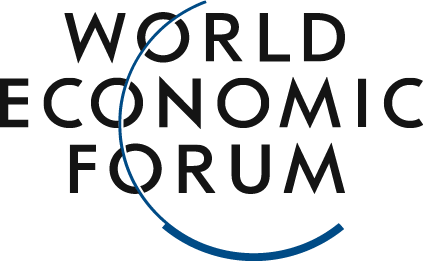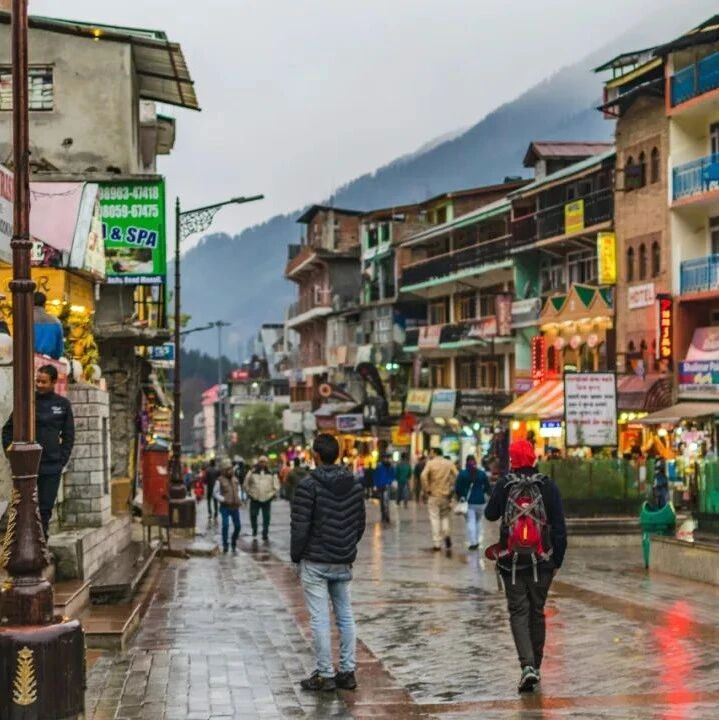The Hindu Kush-Himalayan region is often referred to as the "Third Pole."
Image source:Getty Images/iStockphoto/fotoVoyageroto
Hamish Pritchard
Glaciologist at the British Antarctic Survey
Helen Millman
Hofmann Scholar at the World Economic Forum and Polar Researcher at the University of Exeter
The United Nations has designated 2025 as the International Year of Glacier Protection, focusing on how climate change is impacting high-altitude snowpack and glacial ice.
High-altitude snow and glaciers are a vital water source for both local communities and the global trade in food supplies.
Key market and policy solutions can help protect these resources while also enabling the development of more accurate water-loss data.
The Hindu Kush-Himalayan region, often referred to as the "Third Pole," is home to some of the world’s largest mountain ranges—and now faces significant challenges posed by climate change. The melting glaciers and snow in these mountains directly impact nearly a billion people, who rely on this vital water resource for agriculture, hydropower generation, and their daily water needs. Moreover, glacier melt poses a growing threat to global food security: through the consumption of staple crops like wheat, corn, rice, beans, and sugarcane, many of us are inadvertently sustaining ourselves on the very snow that once blanketed the Himalayas.As global temperatures rise, the seasonal meltwater from glaciers and snowpacks is steadily declining—yet this meltwater has historically been the lifeline for local communities and farms. This poses a serious threat to water security, particularly during drought years. It could lead to intensified competition over water resources, force people to migrate, and even spark conflicts between countries competing for access to this vital resource.Why mountain snow and glacial ice are importantMountain regions cover more than 25% of the world's land area. Typically, mountainous areas experience wetter weather compared to lowlands, making them a vital source of freshwater. Mountain glaciers and snowpack act as natural reservoirs, storing water during winter and releasing it gradually in spring and summer. This seasonal delay in water flow helps meet peak demand downstream during critical periods.While glaciers provide a smaller volume of water compared to snowpacks, they are far more stable and reliable, helping to buffer against extreme wet or dry conditions caused by unpredictable rainfall. This becomes especially critical during drought years when other water sources are scarce.For basins covered by snow and ice, the disappearance of these icy reserves means reduced spring river flows—and, more critically, water shortages for communities during the driest summer months. Asia’s Ganges, Indus, Yarlung Tsangpo, Amu Darya, Syr Darya, Mekong, Yellow River, Yangtze, and Irrawaddy river basins all rely on the melting ice from the Third Pole to supply their water needs.How climate change is affecting water resources in the Third PoleA large population living downstream of the Third Pole heavily relies on mountainous water sources. For instance, one-third of Pakistan’s electricity comes from hydropower, two-thirds of Tajikistan’s energy is generated by hydroelectric plants, and in Nepal, as much as 90 percent of its power is derived from hydropower. Meanwhile, the Indus River supports one of the world’s largest irrigation-based agricultural systems, projected to supply water to 319 million people across Pakistan, India, Afghanistan, and China by 2025.Population and income growth have led to increased demand for water resources, further heightening the vulnerability of these communities to water scarcity. Over the past century, drought has been the most devastating natural disaster in these regions, claiming over 6 million lives and affecting 1.1 billion people.Asia's water resources represent one of the most undervalued ecosystem services globally, a reality that further heightens the region's vulnerability to water scarcity. The loss of glacial meltwater will exacerbate water-demand peaks during drought years, increasing the risks of conflict and forced displacement.How to tackle the challenge of glacial meltingTo address these challenges, we must promote better water management and resilience through market-based and policy-driven approaches. Encouraging efficient water use can be achieved via measures such as reforming water pricing and subsidies, fostering water trading, and investing in water-saving technologies. For instance, shifting to micro-irrigation systems and drought-resistant crops can significantly reduce agricultural water consumption. Meanwhile, many industries—particularly data centers—can lessen their reliance on water by investing in efficiency initiatives and relocating operations to regions with more secure water supplies.Governments and development agencies can support these efforts by creating a stable regulatory environment that encourages investment in water infrastructure and management. Innovative insurance products—such as parametric micro-insurance—can serve as a powerful tool for small farmers to cope with crop failures caused by drought, preventing them from being forced to migrate as a result.We also need more accurate and comprehensive data. Predicting water resources is complex and uncertain—especially when it comes to the highest mountain peaks, where measurement data are virtually nonexistent. This uncertainty can be costly for project planners. Effective management, however, relies on precise, extensive weather, glacier, and river-flow data.Recent advancements in measuring snowfall, glacier volume, and river flow can provide decision-makers, investors, and communities with the essential information they need to make informed choices. For instance, a new method leveraging lake water pressure to measure snowfall offers unbiased, large-scale observational data—crucial for refining weather models. Similarly, helicopter-mounted radar systems can map glacier thickness across vast areas, delivering critical insights that help predict glacier melt and assess future water resource availability.We can take the following measures to support these solutions:- Reform water pricing and subsidies to reflect the true cost of water and encourage efficient water resource management;
- Promoting water-saving technologies and practices in agriculture and industry;
- Support innovative insurance products to protect small farmers from crop failures caused by drought;
- Investing in the collection of precise and comprehensive data on weather, glaciers, and river flows;
- Create a stable regulatory environment and encourage investment in water infrastructure and management.
By implementing these measures, we can better manage the risks associated with climate change and ensure a sustainable water future for the Third Pole—and for the hundreds of millions of people who depend on it.As the United Nations International Year of Glacier Protection 2025 and the Decade of Action for the Cryosphere Science (2025–2034) approach, taking decisive action to safeguard these vital resources for the benefit of future generations has never been more critical.
The above content solely represents the author's personal views.This article is translated from the World Economic Forum's Agenda blog; the Chinese version is for reference purposes only.Feel free to share this in your WeChat Moments; please leave a comment at the end of the post or on our official account if you’d like to republish.
Editor: Wang Can
The World Economic Forum is an independent and neutral platform dedicated to bringing together diverse perspectives to discuss critical global, regional, and industry-specific issues.
Follow us on Weibo, WeChat Video Accounts, Douyin, and Xiaohongshu!
"World Economic Forum"





